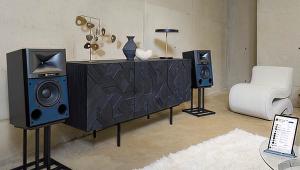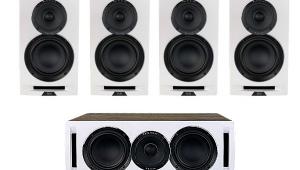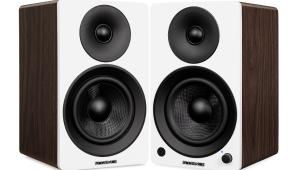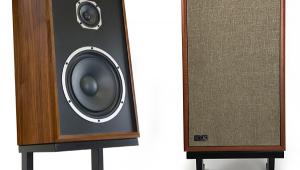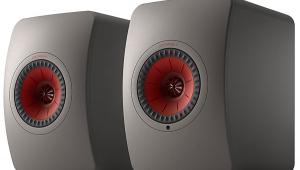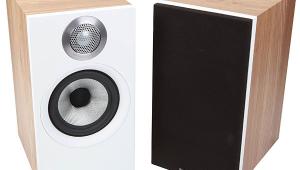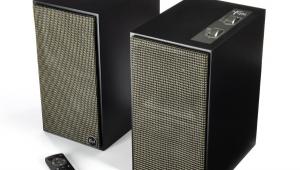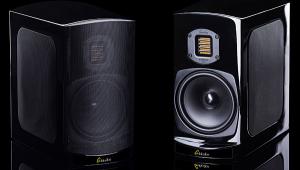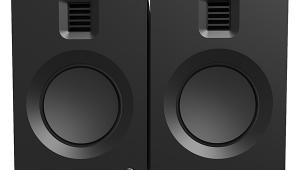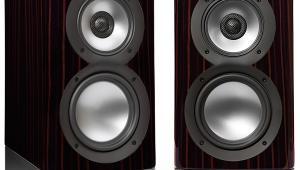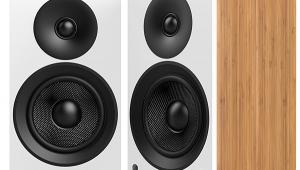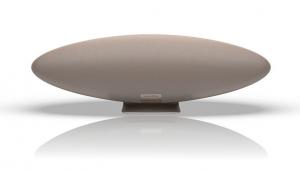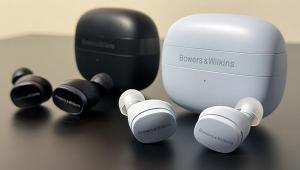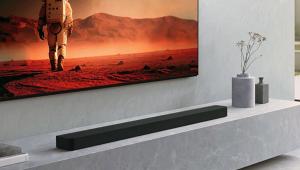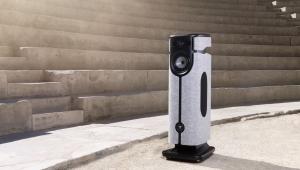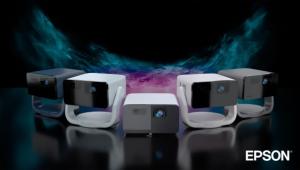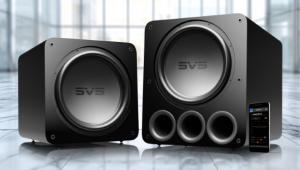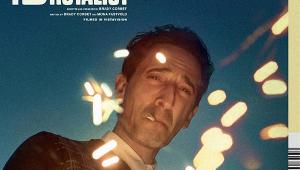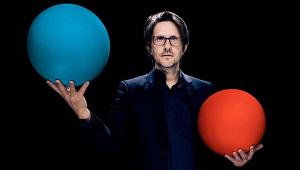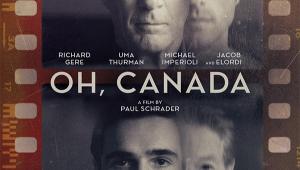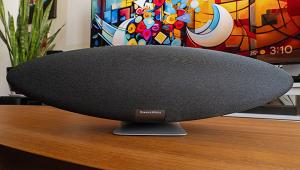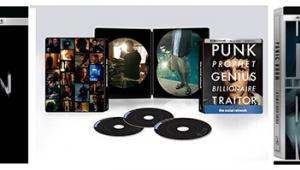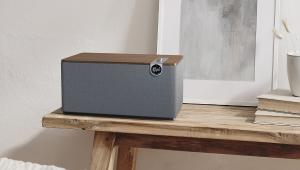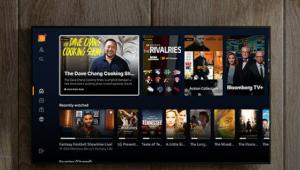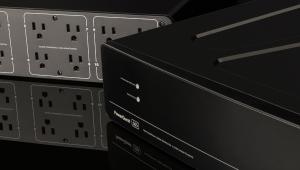Phil Jones Pure Sound Vi-410 Speaker System Page 2
The Big Gorilla in the Room
Of the movie selections, the highlight and toughest test was Peter Jackson’s King Kong. This was the first time I’d seen it on Blu-ray, with a DTS-HD Master Audio soundtrack. I saved it for the end of my movie sessions, so it was aided by that last increment of break-in time. The tweeters made a meal of the opening title sequence’s shimmering cymbals and massed trombones. But it was the sub that left the greatest number of indelible impressions in my notebook.

The greatest challenge for the sextet of 5-inch woofers, splitting 160 watts among them, was the stomping feet of giant creatures, a staple of the surround realm at least since Jurassic Park. The force dominated my medium-sized room. Sub EQ definitely helped make the impacts more focused and palatable. There was also a vocal component, the bass-heavy roar of Kong himself. I liked the screenwriting session in the groaning bowels of a creaking ship, which had some low-level but discernible bass effects.
As successive action scenes kept stepping up the volume, I found the system to be reasonably painless with loud effects, but when the movie progressed to ultra-loud effects, I started backing off the volume. In fairness to the system, this movie has an almost freakishly wide dynamic range. It probably would have worked better if I had moderately used one of the new low-volume listening modes (Dolby Volume, THX Loudness Plus, Audyssey Dynamic Volume). Even with the master volume ratcheted back, vocals remained intelligible at lower levels.
Zombie Strippers is a waste of Dolby TrueHD. Most of the story takes place in a dank, echoey, claustrophobic nightclub. Relentless volleys of soft-core pornography and squirting red fluids are serenaded by deliberately caustic music, a kind of bitter sonic gruel that’s no fault of the system it pours from. The movie is unsuitable for children, adults, and most other sentient beings. It’s redeemed only by the comic charisma of Robert Englund as the sinister club owner.

Taken was the first movie I watched through the system. Even in old-school lossy Dolby Digital, the DVD features a vivid string-orchestra sound, with some bite to the bowing, in contrast to the usual bland Hollywood recording. That was about all my notebook had to say, since I got completely caught up in the story of Liam Neeson as a ruthless father seeking his kidnapped daughter. The story raises troubling questions (is torture ever justified?) against a background of real-life atrocities (human trafficking).
From Italy to the Urbal Zone
Sviatoslav Richter had begun performing on Yamaha concert grands by the time he recorded Haydn’s Piano Sonatas 2, 24, 32, 46 in 1986. The instrument’s characteristically limpid (as opposed to clattery) signature comes through in this live recital, recorded in Mantova, Italy. Richter endowed Haydn with a set of vigorous but not excessive dynamic gradations and gorgeous tone-color changes that match the elegance of the music. The concert-hall decay is minimal, but it’s still long enough to drive too much information to the surrounds, so stereo was the preferable listening mode. The Vi-410 satellite was up to the two-channel task and the tweaked PSW-1 sub made the low end of the keyboard palpable without exaggerating it. This CD is hard to find, but you can download the album on Amazon. Why Decca didn’t include this material in
its 11-volume Richter: The Master series is inexplicable to me. In general, the world lionizes
Mozart and neglects Haydn. Mozart didn’t make that
mistake.
Head of Steam is the sixth album by Brass Monkey, an English folk supergroup consisting of guitarist Martin Carthy, John Kirkpatrick on button accordion, anglo concertina, and melodeon, and a revolving array of brass players. As often happens, Carthy’s distinctive and brilliant acoustic guitar was mixed a little too low, but it was easier to hear when I switched from stereo to Dolby Pro Logic II. Surround was also the right choice for the recording venue, which is identified in the credits as the Old Vicarage. This is a space of probably the ideal dimensions for a five-man folk band, with a tight decay that haloed the instruments without blurring them. The satellite and center’s fabric-domed tweeters got plenty of nourishment out of this spatially subtle but pleasing material.
The sub came into its own with the deep synthesizer tones that underscore some parts of China Chill: Urbal Essence from the Far East. Urbal is a synonym for urban, the name of a magazine, and in this case, a music genre with hints of electronica and techno. This compilation of “urbal blissout tracks” enhances the genre by adding traditional Chinese instruments to modern ones, which creates an organic-technological hybrid that’s more emotionally affecting than ordinary electronica. The audiophile- quality recording by Aik Yew-goh, the entrepreneur/engineer who gave the Hugo label its name, blends the traditional and modern elements seamlessly in a recognizable space. The fact that I noticed ambience in all three audio selections says some- thing good about the speakers. They continued to gain focus throughout the review process.
I got a kick out of this system. The midrange achieved a stature that exceeds the price tag of the Vi Series satellites. The subwoofer—besides being pure fun—suggested a new design strategy for a too often neglected product category, one that’s critical to the success of any home theater system. And the addition of equalization was a big plus. Finally, there’s the Deco-like look, which may justify the presence of a surround speaker system in a room where décor is carefully guarded. Phil Jones did a lot of things right in this system—and a few things inspiringly. It made me hungry for a shot at his next independent-thinking and forward-looking design in the home theater speaker genre.

- Log in or register to post comments
